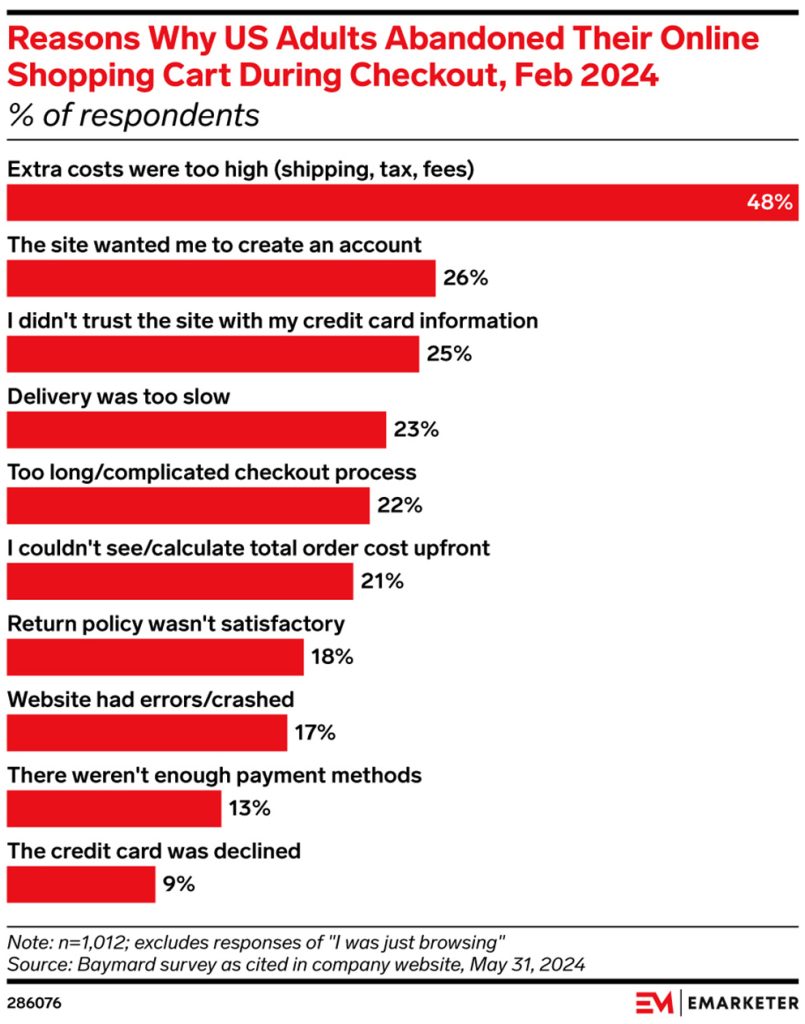Economic Pulse: Leading Retailers Focus on Great eCommerce Fulfillment Despite Uncertainty

The Latest US Economic Outlook and eCommerce Fulfillment
Uncertainty defines the current economic outlook in the US. While the economy has not entered a recession, weak July jobs reports and stock market volatility signal a potential slowdown in the second half of the year.
Summer spending is more muted than 2023, when consumer spending surged. Consumers are more pessimistic over inflation concerns and lower personal savings. And they signaled this pessimism with their wallets. Many consumers reduced spending on non-essentials this summer. Even high-income consumers seek more deals and coupons, according to EMARKETER.
For eCommerce retailers preparing for peak, economic uncertainty means headwinds heading into the holiday shopping season.
There are still opportunities. For example, Gen Z consumers plan to splurge in Q3 2024, according to EMARKETER. Now leading brands must assess how best to attract and keep cautious consumers. They can still adapt to address changing consumer expectations amid economic uncertainty.
Consumers Expect Great Brand Experiences and Fast, Free eCommerce Fulfillment
eCommerce retailers can still win customers and boost peak season revenue. Leading brands assess what customers are still looking for when they shop online—and prepare their eCommerce fulfillment strategy accordingly. In addition to great online shopping experiences, customers want two things: fast, free shipping, and easy returns.
- Twenty-three percent of shoppers abandon online orders due to slow shipping.
- Thirty-six percent of shoppers abandon carts due to high shipping fees.
- Over two-thirds of shoppers say they won’t consider purchasing from a retailer that doesn’t offer free shipping.
- Over 18% of US shoppers say they abandoned a purchase because of an inconvenient return policy, according to EMARKETER.

High costs, slow delivery, and poor returns lead to cart abandonment.
Consumer expectations are high, but fast, free delivery and returns are costly.
Transportation costs account for between 50-70% of US logistics spend. Retailers must find a balance between fast, free shipping and transportation costs. But retailers offering slow delivery could lose new and returning customers.
In addition, many brands have reduced or eliminated free return shipping options in favor of return or restocking fees. Eighty-one percent of retailers now charge for returns. While this may not deter all consumers, brands will still need to consider how to best balance return policies and customer expectations.
How Brands Can Build Great eCommerce Fulfillment
There is a path forward: Retailers can assess their eCommerce platforms and fulfillment solutions to identify cart abandonment or returns issues. Likewise, they can assess shipping options and transportation networks to optimize order shipping and delivery.
And while much of this work can occur in-house, leading retailers also consider where strategic 3PL partnerships can optimize customer experiences while also reducing supply chain costs.
Optimize eCommerce Shipping Costs
If shoppers abandon cart orders due to high shipping costs, retailers can:
- Offer Free Shipping Thresholds: Encourage larger purchases by providing free shipping on orders over a certain amount.
- Implement Flat Rate Shipping: Simplify the decision-making process with straightforward, predictable shipping costs.
- Provide a Shipping Calculator: Allow customers to estimate shipping costs early in the shopping process.
- Consider Membership Programs: Offer free or discounted shipping for loyal customers through a subscription model.
Improve eCommerce Delivery Speeds
To address delivery speeds and brand delivery promises, retailers can:
- Offer Multiple Shipping Speeds: Provide options from economy to express, catering to various customer needs.
- Leverage Fulfillment Centers: Utilize a 3PL network of strategically located eCommerce fulfillment centers to reduce delivery times.
- Highlight Expedited Options: Make fast shipping options more visible for time-sensitive purchases.
- Diversify Shipping: Leverage Radial’s carrier management network to offer final mile solutions typically reserved for the largest shippers.
Improve eCommerce Returns and Reverse Logistics
To optimize the returns process, retailers can:
- Develop a Balanced Return Policy: Review and implement a portfolio of options, from reduced return timeframes, limited categories and conditions, and flexible return fees.
- Improve Product Information: Help customers make more informed purchasing decisions (and avoid returns altogether). Forty-nine percent of shoppers return items because the item didn’t match the online description.
- Introduce Restocking Fees: Implement restocking fees as a percentage of the item’s price or as a flat fee to offset processing costs. Leverage data analytics to identify patterns and determine what the appropriate fee structure should be.
- Partner with Returns Experts: Outsource returns management to experts to streamline processes, reduce costs, and keep customers happy.
Partner with a 3PL to Create Tailored eCommerce Fulfillment Strategies
While economic uncertainty feels daunting, leading eCommerce retailers can still win during the 2024 holiday season by creating exceptional brand experiences and tailored eCommerce fulfillment. The first place to start: partnering with a proven third-party logistics provider.
eCommerce retailers don’t have to navigate uncertainty alone. Leading retailers partner with third-party logistics providers to optimize fulfillment from the shopping cart to order delivery. 3PLs offer optimized fulfillment center locations, innovative technology and data analytics, inventory and order management, and reverse logistics services. They can design solutions to optimize eCommerce operations, improve delivery times, and meet customers’ high expectations.
How Radial Can Help
As a leading 3PL provider, Radial is uniquely positioned to help eCommerce businesses address pain points, improve customer experience, and reduce supply chain costs. Here’s how:
- Optimize Shipping Costs: By leveraging our extensive network and logistics expertise, we help retailers offer competitive shipping rates without sacrificing profitability. Consider implementing tiered shipping options or free shipping thresholds to incentivize larger purchases.
- Improve Delivery Speed and Reliability: Our strategically located fulfillment centers and advanced routing algorithms ensure faster, more reliable deliveries.
- Provide Clear Delivery Estimates: Transparency is key. Offer customers accurate, real-time delivery estimates during checkout.
By partnering with Radial, eCommerce retailers gain access to industry-leading logistics solutions that directly address the top reasons for cart abandonment. Our comprehensive, tailored approach to order fulfillment and shipping optimization can help you convert more browsers into buyers, ultimately driving sales and customer satisfaction.
Don’t let economic uncertainty derail your eCommerce fulfillment. Contact Radial today to learn how our 3PL services can transform your eCommerce—from click to delivery.
Learn how Radial can help you with eCommerce fulfillment.
